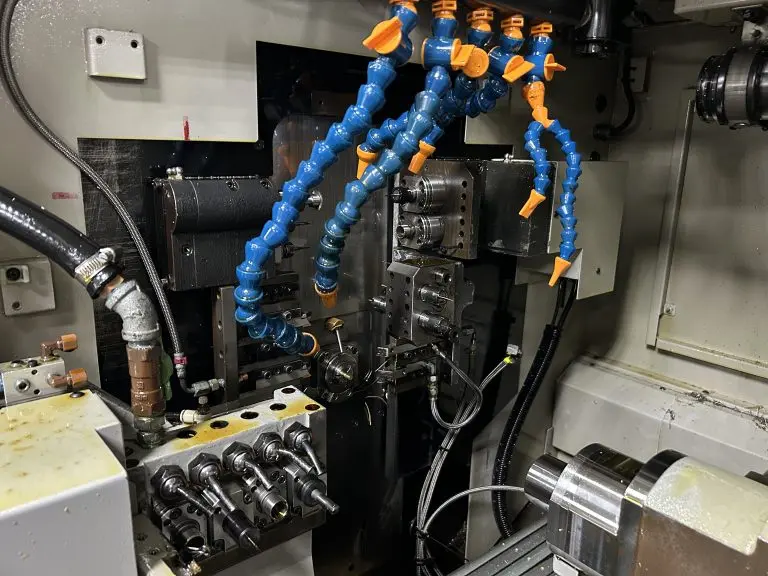As a professional five-axis CNC machining manufacturer, Great Light has advanced five-axis CNC machining equipment and production technology, which professionally solves metal parts manufacturing problems, and can also provide one-stop post-processing and completion services. Most materials can be quickly customized and handled. For customized precision machining, the first choice is excellent five-axis CNC machining. But have you ever wondered what was the reason for creating the intricate design and precise cutting that CNC machining is famous for? It all starts with the basics of CNC program.
CNC or computer numerical control is a method of automating machine tools using computer programming. The program consists of a series of instructions followed by the machine to create the required portion or product. These instructions are written in languages that can be understood by machines, such as G code or M-Code. The program is then loaded into the computer’s control system, which executes instructions and directs the movement of the machine.
To create a CNC program, programmers must first design parts or products using computer-aided design (CAD) software. Then, the CAD design is converted into a CNC program using computer-aided manufacturing (CAM) software. The CAM software generates the G-code or M-code instructions that the machine will follow. The program is then edited and optimized to ensure it is efficient and effective.
One of the key concepts in the basics of CNC program is the concept of coordinates and axes. In a CNC machine, a shaft refers to the different directions the machine can move. For example, a three-axis machine can move in the X, Y, and Z directions, while a five-axis machine can move in the A and B directions. Coordinates are the specific point in the space that the machine will move to. By combining coordinates and axes, programmers can create complex motions and shapes.
Another important concept of the basics of CNC program is the concept of speed and feed rate. Speed refers to the speed at which the machine moves, and feed rate refers to the speed at which the cutting tool feeds the material. The speed and feed speed must be carefully controlled to ensure that the machine moves at the correct speed and that the cutting tool will not be damaged.
In addition to coordinates, axes, velocities, and feed rates, there are many other factors when creating a CNC program. For example, programmers must consider the type of material to be cut, the size and shape of the part, and the required finish. Programmers must also consider the functionality and limitations of the machine, such as its power and accuracy.
Appropriately, our experienced team of programmers and mechanics work together to create complex and precise CNC programs. We use the latest CAD and CAM software to design and optimize our programs, and we have a range of advanced five-axis CNC machines that can handle even the most complex projects. Whether you need a small portion of parts or custom precision machining for mass production, we have the expertise and equipment to deliver high-quality results.
In short, the basics of CNC program are a key component of the CNC machining process. By understanding the concepts of coordinates and axes, velocity and feed rate, and other factors, programmers can create complex and precise programs to guide the motion of the machine. From a good point of view, we have the expertise and equipment to create customized CNC programs for a wide range of applications, from custom precision machining to mass production. If you have a project that requires custom precision machining, please contact us now to learn more about our features and services.
FAQ:
Q: What is CNC processing?
Answer: CNC machining is a method of using computer programming to automate machine tools. It involves creating a program that guides the movement of the machine to create the required parts or products.
Q: What is G code?
Answer: G code is the language used by CNC computers to understand instructions in programs. It consists of a series of codes that tell the machine what speed to do.
Q: What is the difference between a three-axis and a five-axis CNC machine?
A: A three-axis machine can move in the X, Y and Z directions, while a five-axis machine can move in the A and B directions. This allows for more complex movements and shapes.
Q: How to create a CNC program?
A: To create a CNC program, you need to use CAD software to design parts or products, convert the design into a CNC program that uses CAM software, and then edit and optimize the program.
Q: What factors should be considered when creating a CNC program?
A: You need to consider the type of material to be cut, the size and shape of the part, the required finish, and the functionality and limitations of the machine.
Q: Can excellent lighting create custom CNC programs for my projects?
A: Yes, our experienced team of programmers and mechanics can create custom CNC programs for a wide range of applications ranging from custom precision machining to mass production. Contact us today to learn more about our features and services.



















